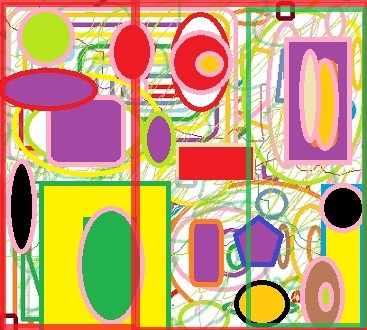How Color can affect your health and moods
Imagine a fresh red strawberry flecked with gold ! just the color is enough to make your mouth water, your teeth aching to bite into them. Now imagine the fruit stripped of its hues , in shades of grey and it becomes worse than unappetizing . It revolts and appalls ! Havent we heard the song Blue Blue my world is Blue, which depicts heart break and sadness, similarly the shade grey is associated with dull and negative feeling and white depicts peace and yellow symbolizes friendship!
Hence, color is essential to the full enjoyment of the things around us and what mother nature has in store for us. According to famous neurologist Oliver Sacks , in one instance a man color blinded in an accident found foods disgusting because of their grayish dead appearance and constantly used the negative words ‘ alien, empty, dead and grey ‘ while describing things ! So, a rose by any other name might smell as sweet but who would stop and pick it, if the color of its petals was grey or black?
So, color can attract and repel, summon members from deepest consciousness , energize , call out to others, define who you are and perhaps even heal. When we go back in history we see that the early human beings decorated their dwellings with paintings done in brilliant hues made from colored clays, ochre and manganese all available naturally ! Centuries later, European countries went to war over trade routes linking them with the exotic dyes and perfumes of the far East. Today, color cosmetics is a billion dollar industry, and one out of every three women on earth uses color cosmetics to decorate her face and other parts of her body including hair !

Color and your Brain
Given the importance of color, it is amazing how little we understand its nuances or appreciate its power in our lives. What is color anyway? Against all intuition , it turns out to be not a quality of objects but rather an attribute belonging to our brain. Few objects possess inherent color of pigment. Color is seen when light waves reflected off an object meet the eye.
Going a little technical about color here - White light is composed of electromagnetic radiation cconsisiting of invisible and visible wavelengths. Within the visible spectrum, the longest rays are seen as red and the shortest ones as violet, with the rest of the colors falling in between. An object appears colored bvecause it absorbs some wavelength and reflects back others . To think back on the strwaberry - when light hits it, only red rays are reflected from its surface whereas all the others are absorbed by the fruit. We say it is red , and yet, in fact it is every other color but red !
Assuming that the light is bright enough, it will stimulate special color receptor cells on our retinas. These calls called 'cones' , are further specialized into three types, blue, green and red. Each type has a different pigment making it sensitive to a different color of light ! Their combined power is such that a person with normal vision can distinguish millions of hues, shades and variations of color.
Classifying and labeling these shades
This depends largely on our culture. Because colors are not really out there in the world but constructed in our retinas and brains, it stands to reason that our perception of a color depends upon our surveying an entire scene and comparing the color we are viewing with surrounding colors. The color you believe look best on you thus depends on many factors, beginning with the tone of our skin - either olive,rose,ivory,teak or caramel !Similarly our hair color and the color of our eyes . For better or worse our skin is the base coat, the background color against which all our clothes and cosmetics are seen.
Today people prefer to experiment with colors of their dress,hair and make up and unless you have a keen sense of color there is always a possibility of mismatch which instead of enhancing your looks may probably make you look an eye sore !
Although today there are fewer rules to govern your color choices it is probably true that some palettes look better than others with your skin type. A particularly intense shade of orange may add luster to one woman’s skin while casting a sickly pallor on another who may have the same skin tone! The different wavelengths of color affect our brain differently as well, triggering specific responses in our bodies. For example :- the long wavelength of Red light normally excites the brain, stimulating the heart and the nervous system !

Some Studies on Color and its effect on people
There have been many studies conducted on color by various universities and researchers and they have all come to the same conclusion , that colors do have an added effect on our mood and personality.
In a New Zealand study on pre school children, increased physical strength and positive mood were demonstrated by the kids working in a pink room, while the reverse was true of children working in a blue room. Blue light, with its short wavelength , tends to calm the brain. Greenrooms, where actors wait before going on stage to perform are normally painted green because that color has a calming and restful effect without the depressing side effect of blue.
Studies have also shown and proved that our association with Red color is sometimes very intense – like blood and fire having the quality to excite. In fact Red color releases adrenaline into the bloodstream, which can both energize and create anxiety. People feel more stressed working in a predominantly red colored room, whereas blue and green colors mean water, sky, trees, which in combination with other such shades may increase the calming effect.
Tribal function of color
Color has long been associated with rituals and customs and many tribes have their special colors by which they are identified. According to researchers - color reflects the culture you are living in. Make up for example is a form of communication, which establishes the different tribal affiliations, repelling or attracting depending o the situation. Normally enemies are able to identify the other tribe through their colors and so do the friends ...
Tribal rituals too are based on color, use of different color for different functions ! It is amazing to see that these olden day tribes were very advanced in their thinking and used color to its maximum advantage where subtle communication was concerned.
We see that different cities and countries too have different meaning with regard to color of clothes – like for example in India people normally don’t wear black often, preferring vivid colors, whereas in the western countries black and different shades of black and grey is the formal everyday color in their attire that most working people prefer to wear.
Our color preferences
According to researchers our color preferences are mostly influenced by our own unique color history – meaning that people are drawn to color from an emotional stand point. Color preferences according to them are normally rooted in long submerged associations arising from one’s culture, how and where you were raised, your feelings about yourself and other important people in your life and what you were taught as a child !
So, we have not much freedom given to us make our own color choices , looks like we have too many constraints that force us to make pre determined choices. However, analysts have identified three color based psychographic groups namely - 1, Color forward 2, Color prudent and 3, Color loyal.
According to a market reserch group , about one third of us are color forward - mainly women and mostly young who are the trend setters, the first to seek out and wear the newest colors. A very small fraction come from other groups as well like young men and middle aged women with children below the age of 10 normally having little say in tthe matter !
More than half of us are color prudent- a group that waits a bit, since although they like to experiment with color they do not want to be the first. The rest are color loyal, generally the older or conservative people who are averse to change. These people need to be coaxed to make any change in their color preferences.

Expanding our own color horizons
Once we understand who we are in relation to color, we can decide how far we can and will go to expand our color horizons.
We can think of this process as a kind of color workout. As one gains more control over color in one’s life, you can begin to make it work for you in many ways. For example :- while the perception of form seems to occur on a cognitive level, colors evoke a more emotional response. As a result, colors can communicate with an immediate physiological effect, sending sublime messages that can be as powerful as spoken words.
Here I am reminded of a famous yesteryears film actress who apparently wore a lighter shade of green while receiving the director when she was happy with a film script and wanted to be part of the film. If she was going to reject a particular script or a film she wore Grey! The so called cool colors , blues and greens which clam the nervous system , appear to retreat from the viewer thereby promising peace and contemplation whereas the warm colors namely the reds and yellows, which raise blood pressure and create excitement appear to advance towards our eye!
Our color selections almost always send symbolic messages, so also the clothes we wear. The combination of the two can affect our energy levels and our mood. A splash of color is conductive to optimal performance. Too much black in Gym wear is not advisable although black is flattering to many skin shades..
Benefits of color
Color can even prove beneficial for our health. In ancient Egypt and Greece, multiple-chamber temples of color were used for physical and spiritual healing and rejuvenation. Many color therapists have adapted the ancient Hindu belief that the body’s internal balance is maintained through seven chakras, or energy centers which respond to the different frequencies of light that we experience as colors.
Just as lasers use the power of invisible light to cut through diseased tissues , visible light too can be used to alleviate a variety of ailments through its effects on the central nervous system !
Introducing new colors into our life
We need to think big and expose ourselves to different colors that are around us. There are colors in almost everything we use like for example - make up, dress, home furnishing, street, greenery around us ,food that we eat etc..We need to study the colors and use them to our advantage.
Even our emotions have color – we go green with envy, We feel blue when we are sad, we blush when we are shy or overcome by some finer emotion, go purple with rage and see the world through rose tinted glasses or sometimes we are in a black frame of mind and see grey all around us ! The more you become aware of color the more comfortable you will feel when experimenting with its range !So we need to add color into our lives, one simply cannot imagine life without is various colors and all colors have their own place.Thus we can say that colors add zing and give a new meaning to our life !
( images - personal and wikimedia )